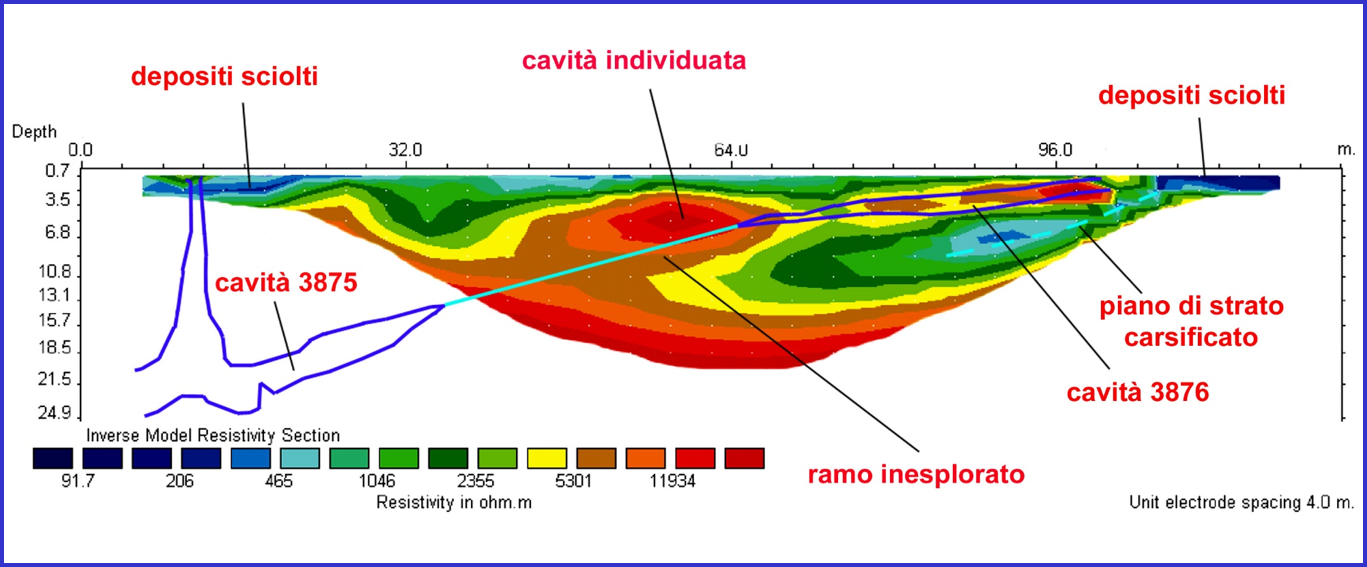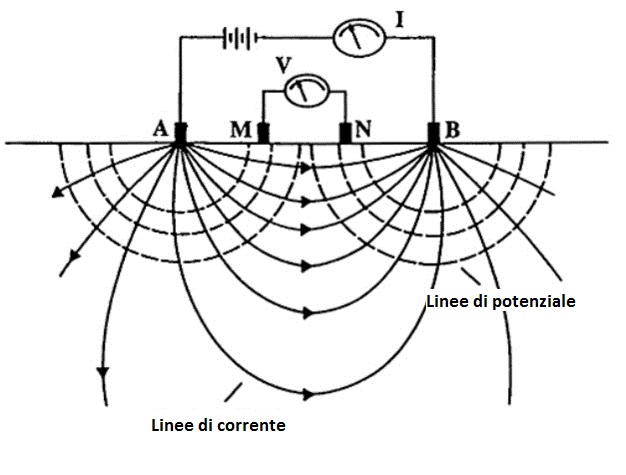The geoelectric methods can be divided into two main categories: those that use natural electric currents existing in the subsoil (passive methods) and those that use artificially electric currents released into the ground (passive methods). The depth of investigation depends on the mutual distance between the electrodes that enter the current and the other two that measure it.
Among the active methods, the most used is the resistivity method which is based on the introduction of electric currents into the ground with two or more electrodes, called "current electrodes", and on the measurement of the potential difference between two other electrodes, called "potential".
The measured parameter is the electrical resistivity of the ground, a physical quantity possessed by the rocks, measured in Ω m which indicates the resistance encountered by the electric current in crossing a rock formation.
The resistivity of the rock formations is influenced by: texture and porosity, degree of cementation, rock temperature, clay content, permeability, temperature and salinity of the aqueous solution contained in the pores.
The resistivity value measured on the surface is an apparent resistivity because the current lines have crossed more rock formations and depends both on the resistivity of the various lithotypes crossed and on their thicknesses.
The apparent resistivity must be considered as an anomaly with respect to that for a theoretical distribution of the potential in a homogeneous and isotropic subsoil of resistivity equal to that of the most superficial layer. The degree of alteration of the potential actually measured on the surface depends on the size, location, shape and resistivity of the lithotypes present in the subsoil affected by the passage of the current. It is therefore possible to obtain information about these lithotypes and their distribution in the subsoil.



